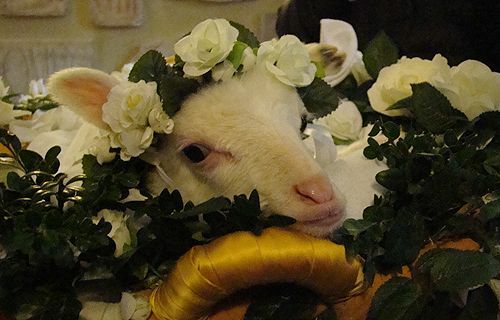Though the prefect at first offered her a chance to preserve her virginity by becoming a priestess of the goddess Vesta, she refused, and so he sent her to a brothel. When he ordered her stripped of her garments, the story goes that her hair unbraided and grew to cover her. As she was paraded through the streets, the onlookers are said to have looked away.
When she reached the brothel, an angel of the Lord surrounded her with a bright light, obscuring her from the eyes of those who intended to rape her. Though many in the brothel fell down in worship, when the son of the prefect approached her, calling the others cowards, he died.
The prefect blamed her for the death of his son, but when she defended herself against his accusations of witchcraft, the prefect said he would believe if she asked the angel to bring him back. After she prostrated herself on the ground in prayer, the son came back to life.
In another version, the son is struck blind, not dead.
Priests and authority figures became concerned about the attention Agnes was getting and condemned her to death. The prefect abandoned her, and she was thrown into a fire in a public area.
But the flame, the story goes, divided in half and did not touch her. In another version, the stake she was tied to would not burn. She praised God and then was executed by beheading.
Because of the nature of her martyrdom, the Church honors St. Agnes as the patron saint of girls, chastity, virgins, and victims of rape.
On the day of her feast day, two lambs are blessed. The lambs are then shorn, and the wool is used to make palliums, liturgical vestments worn by archbishops.
Credit: Source link




